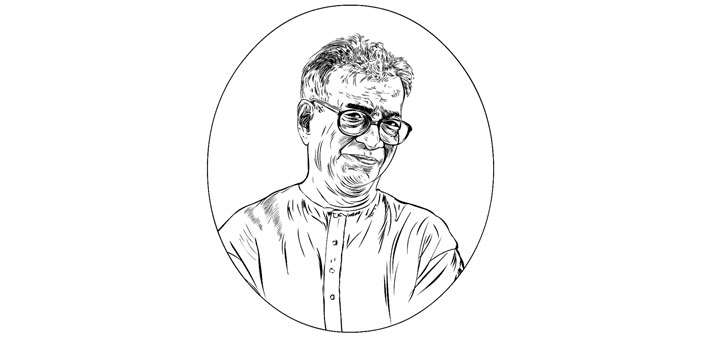A multi-faceted artist (1924-2016)
Kalpathi Ganpathy Subramanyan, who passed away recently in Vadodara at the age of 92, was one of India’s most celebrated artists and one of the earliest pioneers who revolutionised Indian art and left an indelible imprint on the cultural ethos of the country. Born in Koothuparambu in Kerala in a Tamil Brahmin family, Subramanyan completed his graduation in Economics from the Presidency College, Madras.
In those heady days of the freedom struggle, a young Subramanyan, considerably influenced by the Gandhian ideology, played his part as a student leader, and also courted imprisonment for a brief while. His interest in art was spurred on after he enrolled in Shantiniketan to study at the Kala Bhavan, the art faculty of Viswabharathi University. He was greatly influenced by eminent artists like Nandalal Bose, Benode Bihari Mukherjee and Ramkinkar Bajaj. Under their tutelage Subramanyan developed a fascination for various art forms and this also inculcated in him a desire to dabble in several diverse disciplines like painting, sculpture, print making and also in creating murals. A short stint at the Slade School of Art in London on a British Council scholarship followed by another one in New York as a Rockfeller Fellow, enabled him to hone his talents further.
Eventually, he returned to Shantiniketan and his alma mater Kala Bhavan, where he took up an assignment as professor and served till his retirement in 1989, after which he was nominated as a Professor Emeritus in Vishwabharathi. He also served as Deputy Director of the All India Handloom Board, a Government of India Undertaking at Mumbai.
The famous artist was also an accomplished writer of children’s literature, specialising in creating and retelling fables, and he also inevitably illustrated all his books. As a versatile artist he also took keen interest in researching and adapting folk art and also in cubism and creating motifs from various artistic traditions of the past. Subramanyam was also prolific in penning books on Indian art and was hailed by his contemporaries for his sheer versatility as a pedagogue, theorist and scholar. He tried his hand at weaving and toy making as well, and often opined that he perceived no real difference between artists and artisans, as both of them shared a common bond of creativity in their pursuits.
Apart from the enduring influence of his native Mahe, he also gained inspiration from a variety of other sources including images from contemporary cinema, ad campaigns and also from his keen observation of human lives as they unfolded before his artistic eyes. The artist also worked on terracotta and on painting on glass to create attractive murals. His razor sharp memory and his inexhaustible range always remained a part of his personality and as a highly respected teacher he was responsible for shaping the careers of all those who came in contact with him. The Baroda School of which he was a pioneer, became a repository of artistic talent and produced a number of brilliant artists and scholars over the years.
Subramanyan also served as a visiting professor to several universities in India and abroad and utilised all opportunities to propagate Indian art in its myriad forms. A number of retrospectives of his work that clearly reflected his genius and his multifaceted talents have been held at various exhibitions around the world. Subramanyam was also the recipient of a number of honours during his lifetime including the Padma Shri in 1975, the Padma Bhushan in 2006 and India’s second highest national honour, the Padma Vibhushan, by the Central government in 2012. The world of contemporary art also took cognisance of his achievements and Subramanyan was awarded the prestigious Kalidas Samman in 1981, the Sironmani Puraskar by the government of West Bengal in 1994, and the Raja Ravi Varma Award instituted by the government of Kerala in 2001. The Academy of Fine Arts also honoured K.G. Subramanyan with a Lifetime Achievement Award.

